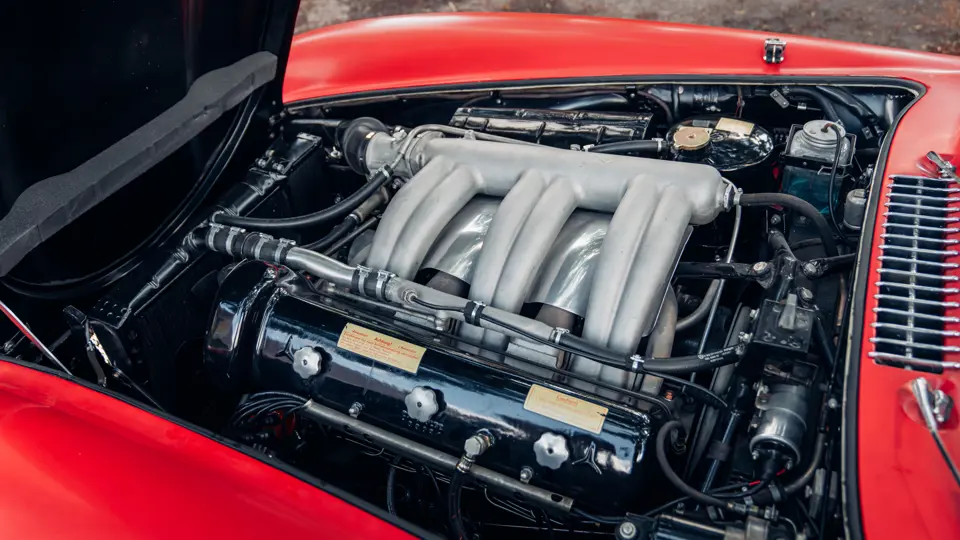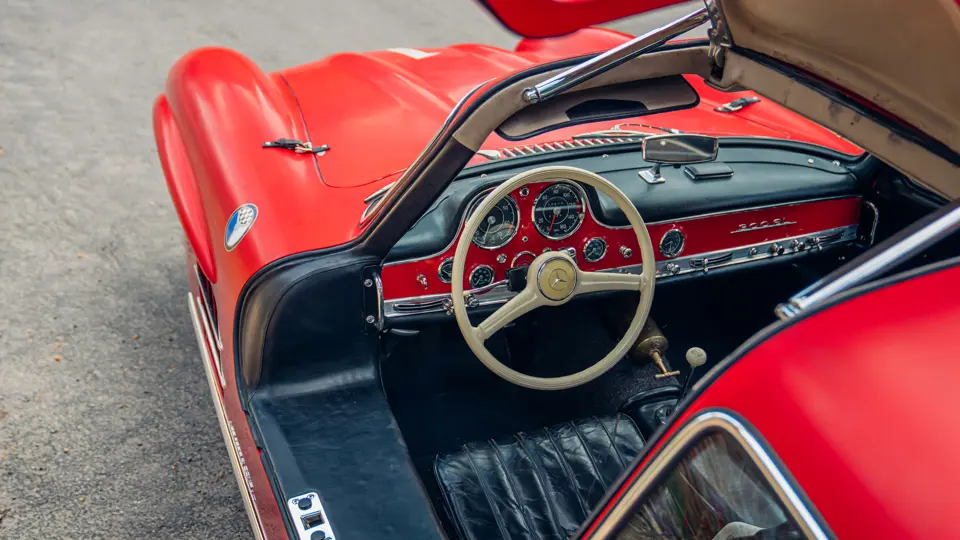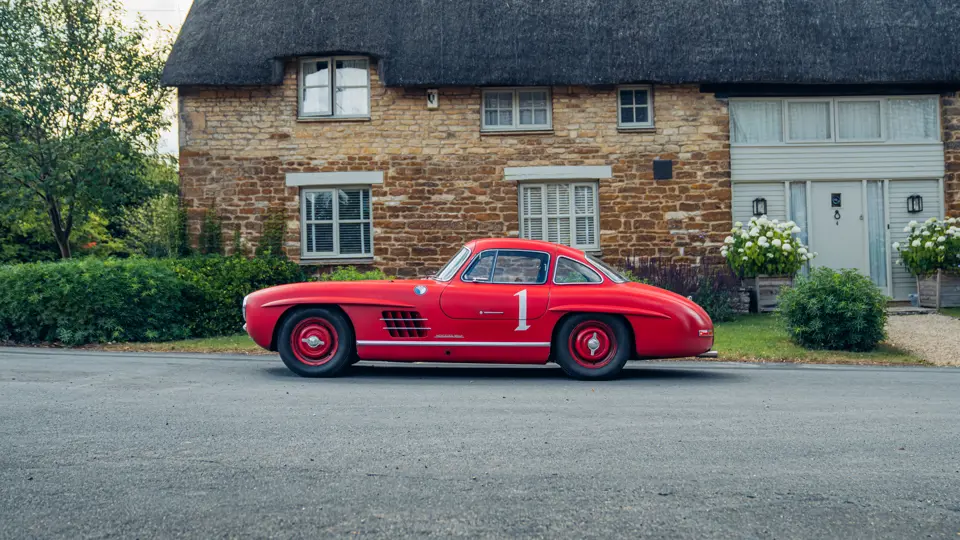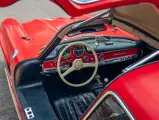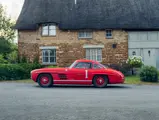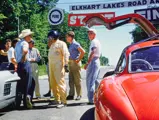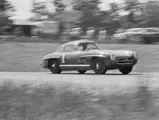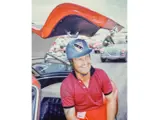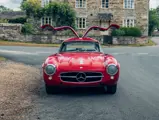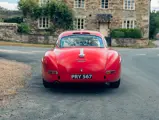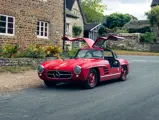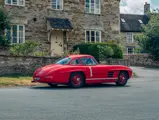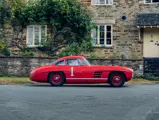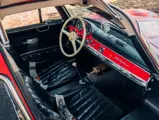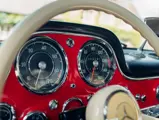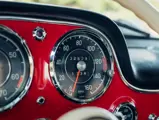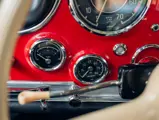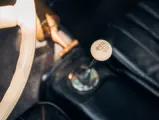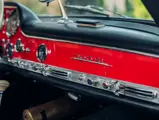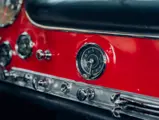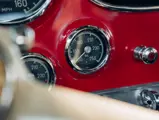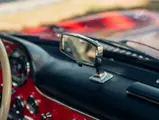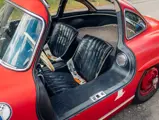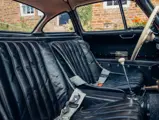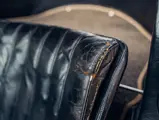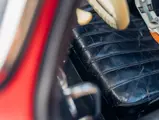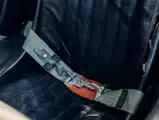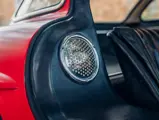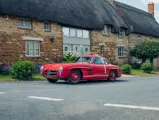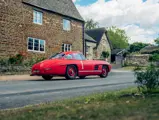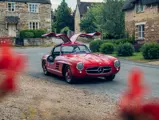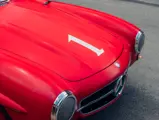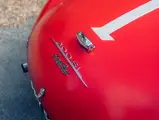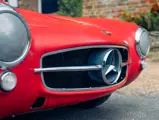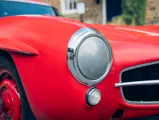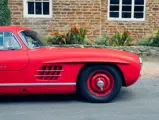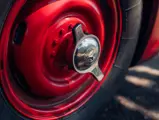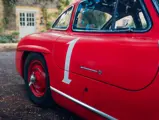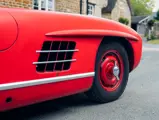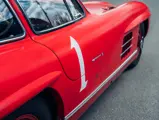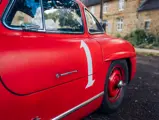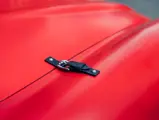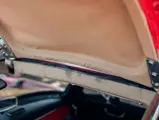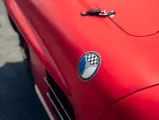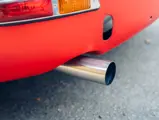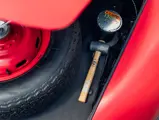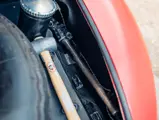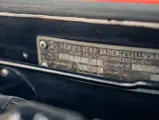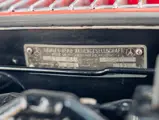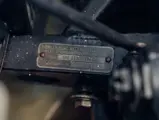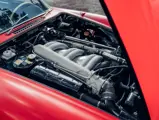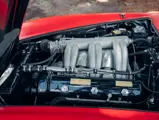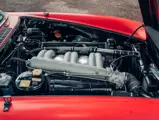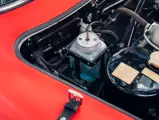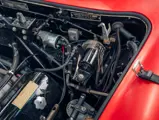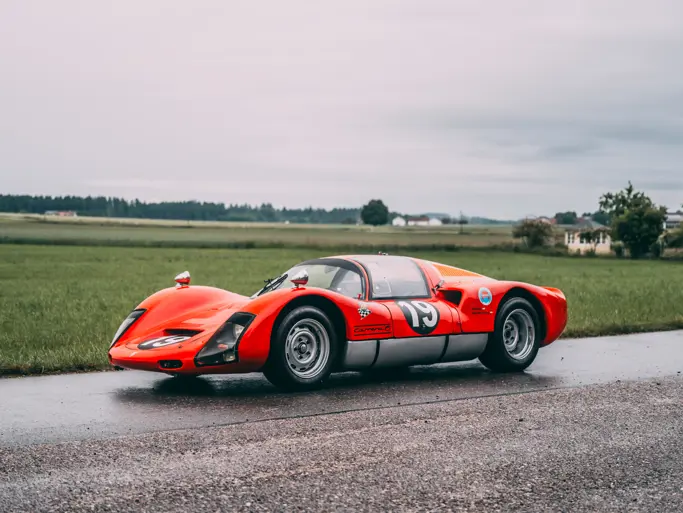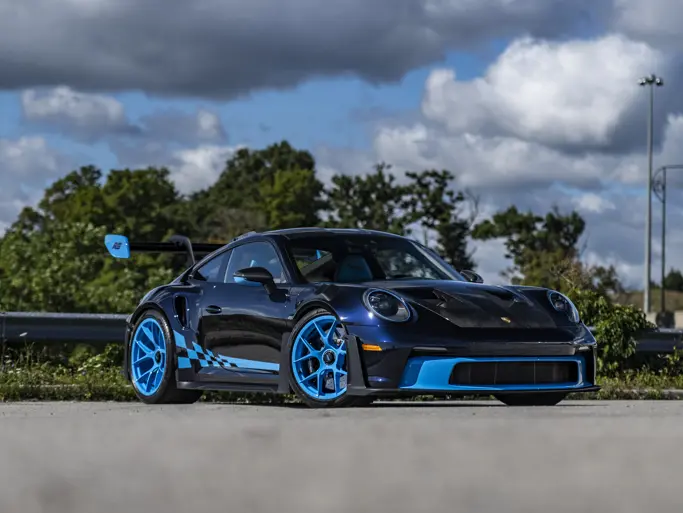
1955 Mercedes-Benz 300 SL Gullwing
{{lr.item.text}}
{{bidding.lot.reserveStatusFormatted}}
- Raced to multiple victories by Charles “Chuck” Wallace in SCCA events throughout 1956 on behalf of Washington, DC-based Mercedes-Benz distributors Jack Pry Limited
- Acquired by Leonard “Chick” Butscher in 1957 and raced in East Coast SCCA events
- Presented in spectacularly original condition with experts attesting that the car retains its original engine, body, rear axle, and kingpins
- Astounding patina throughout, boasting its original interior that can be matched to period photos, alongside original paintwork discovered and carefully preserved by the current owner
- Thought to be one of a handful of 300 SL Gullwings with significant race history
The mid-1950s was a curious time for Mercedes-Benz. Emerging into the post-war era, there was perhaps no other European manufacturers that commanded as much respect both in the showroom and on the racetrack. On track, they truly were a dominant force with the W194 300 SL coupes of 1952 and the Formula-specification W196 SLR racecars that followed a few years later. The road-legal W198 300 SL Gullwings brought the advancements seen in the racing cars, notably fuel-injected engines and space frame chassis, to the public for the first time. The tragic accident at the 24 Hours of Le Mans in 1955 saw Mercedes-Benz halt all factory racing efforts, but a number of privateers took it upon themselves to race these incredible new W198 300 SLs, with several cars in the United States becoming quite successful.
According to contemporary factory records, chassis 198.040.5500278 was completed at Mercedes-Benz’s fabled Sindelfingen factory on 29 April 1955, duly finished in the distinctive color combination of DB534 Feuerwehrrot—literally translated as “Fire Engine Red”—with black leather interior. Significantly, the car was specified with the highly desirable optional Rudge knock-off wheels and hubs, sealed beam headlamps, and front and rear bumper overriders, while its Imperial calibration dash instruments were indicative of the car’s destination for the all-important US market. Having covered just 118 pre-delivery miles, the car was shipped the following day, via the Bremen–New York route, to Mercedes-Benz Distributors Inc. of New York City. As with many 300 SLs, the car’s onward delivery paperwork has regrettably been misplaced, and copies of the originals were not available from Mercedes-Benz Classic in the case of this particular car. However, exhaustive research by the consigning owner all but confirms that 5500278 was distributed to Washington, DC-based Mercedes-Benz, Jaguar, and Porsche agents Jack Pry Limited later that year.
JACK PRY, CHUCK WALLACE, AND THE RED GULLWING
The plentiful supply and relative affordability of European sports cars such as the Jaguar XK120, Allard J2, and Austin-Healey 100 underpinned the burgeoning SCCA Club Racing scene on both US seaboards in the early 1950s, and Jack Pry were at the forefront of this vanguard with their own self-entered XK120. Invariably entrusted to their preferred driver, Charles Wallace—an unlikely fusion of upmarket DC hairdresser by day and capable semi-professional racer on weekends—the combination became a familiar sight at East Coast venues such as Watkins Glen, Bridgehampton, and Sebring, as well as those further afield. Indeed, Wallace’s efforts in the gruelling 12 Hours of Sebring, in which he finished fifth overall in 1952 and seventh in 1953, led to a drive in the 1954 edition in a factory-entered Aston Martin DB3S, and subsequently to a prolonged spell driving Jaguar D-types and Porsche 550s for the crack Cunningham team.
Having secured back-to-back SCCA Class C Production titles in 1954 and 1955 with the Pry XK120 and its successor, the XK140, Wallace was retained by his loyal employers for 1956; their intention being to contest similar events with the 300 SL. It was hoped that by moving from a Class C to Class D car, overall race wins would become a realistic possibility—and the new combination could scarcely have debuted in more positive fashion than with a win at Walterboro, South Carolina, on 10 March 1956. Only a fortnight later, the car was entered for the 12 Hours of Sebring race—Wallace’s fifth in succession, and one which included the likes of Fangio, Castellotti, Moss, and Behra amongst its entry. However, oil surge exacerbated by the circuit’s fast, sweeping turns which is believed to have caused damage to Paul O’Shea’s 300 SL, brought about a pre-emptive withdrawal, seeking to avoid the same problem, and a consequent non-start in the race for Wallace and co-driver Duncan Black.
Duly repaired post-Sebring, both Wallace and the Gullwing returned to SCCA action at Cumberland, Maryland, on 20 May, although the presence of the pacesetting 300 SLs of Paul O’Shea and Dick Dungan restricted the nascent combination to a third-placed finish—both overall and in class. The following month, the Pry equipe decamped to Eagle Mountain near Fort Worth, Texas, with the factory-supported O’Shea once again dominating the weekend’s proceedings. Nevertheless, Wallace finished second in the first race and third in the second, picking up valuable championship points in the process. An itinerant three-week period then concluded with a trip to Elkhart Lake, Wisconsin, on 23 June; the near-2,000-mile round trip from the capital rendered worthwhile by a well-earned victory. Notably, O’Shea retired early, but Wallace headed a Mercedes-Benz 1-2-3-4 at the chequered flag.
Early July saw Wallace and the 300 SL contest the SCCA round at the featureless Beverly Airport track, in Massachusetts. Although the event attracted a modest entry of only 17 cars, this was to prove the Pry team’s seasonal high point, with Wallace defeating O’Shea for the first time in the battle of the 300 SLs. After a hiatus of some three months, and having opted to skip the final four SCCA Championship rounds in the interim, Wallace and the Gullwing returned to action at Thompson International Speedway in Connecticut, on 28 October. This was to mark Wallace’s final race start in the Gullwing and resulted in a second-placed finish behind winner Art Simmons’ similar 300 SL. Despite missing a substantial part of the season, Wallace finished runner-up in the year-end SCCA standings to O’Shea; the New Yorker having capitalized upon Wallace’s mid-season absence to secure his second successive Class D Production Championship.
In an intriguing post-script to its mainland racing season, it appears that the 300 SL was transported to Nassau in December 1956 for the Third Annual International Bahamas Speed Week. The car’s accompanying history file contains photographs of Wallace standing next to Scuderia Ferrari driver Alfonso de Portago at the Drivers’ Briefing, and of the car parked in the paddock behind Stirling Moss’ Maserati 300S, yet frustratingly there is no evidence of the car having competed. According to contemporary results, Wallace participated in other events that week with his Porsche 356 Speedster, so it remains a possibility that the 300 SL developed mechanical maladies and that the Porsche was raced exclusively instead.
1957: FURTHER SUCCESS FOR THE GULLWING AND CHICK BUTSCHER
The 1957 racing season marked another change in sporting direction for the Pry team, for they acquired a Porsche 550 RS with which Wallace would contest, and ultimately win, that year’s SCCA Class F Modified Championship. Consequently, the Gullwing was offered for sale; the classified section of the local Daily Times newspaper in late 1956 containing an admirably concise advertisement simply stating “Mercedes-Benz 300 SL–very clean. Jack Pry.”
Evidently Floridian restaurant chain owner Leonard “Chick” Butscher was suitably enticed by the advertisement, as he duly acquired the car and prepared it for the upcoming race season. Although strictly an amateur, Butscher and his new 300 SL made their debut at the SCCA-organized meeting at New Smyrna Beach, Florida, on 10 February 1957; the feature Sports Car race of which, remarkably, included the likes of Carroll Shelby, Richie Ginther, Lance Reventlow, and future Daytona 500 winner Marvin Panch. Shelby won the race comfortably in John Edgar’s fearsome Ferrari 410 Sport, but Butscher acquitted himself admirably to finish 18th overall and third in Class D Production. Later that day, he contested the Production race, in which he finished tenth overall and fourth in class, just behind the Chevrolet Corvette of future tuning legend Don Yenko.
Further SCCA outings at Boca Raton, Florida, in March and Eagle Mountain, Texas, in April afforded Butscher additional and invaluable seat time; the latter yielding a welcome fourth place overall and class win. Ironically, Butscher’s final outing in the car at Marlboro, Maryland, in May resulted in a career-best second-place finish behind Jim Robinson’s Jaguar XK140; the 300 SL thereafter being replaced by a new Corvette for the balance of the season.
POST-COMPETITION HISTORY AND REDISCOVERY
Regrettably, the exact length of Butscher’s ownership is not known, but it appears that 5500278 remained on the East Coast for some time. By 1978, it had passed into the custody of John A. Harkness of Hamilton, Massachusetts—who entrusted the car to pre-eminent restoration experts Paul Russell and Company of nearby Essex, Massachusetts—and by 1995 ownership had transferred to another Massachusettsan, Donald Kohlemann. Thereafter, the car returned to Europe for the first time in more than three decades, enjoying successive spells in the Zurich-based Mannheimer Collection, and with a Mr. Ebel in Germany in the 1990s and 2000s. It should be noted that by this stage the car had been repainted Silver Grey, but that its gloriously patinated interior remained untouched, with its competition history having been lost to time.
In 2015, 5500278 was purchased by a UK-based collector, from whom the consigning owner acquired the car in 2023. Later that year, a detailed examination was undertaken by marque expert Martin Cushway, who identified that, remarkably, the car retained its original chassis, body, cylinder block, cylinder head, back axle, and both kingpins. Indeed, the only minor deviation from its factory build sheet was its gearbox: a replacement unit of identical specification to that originally fitted, just five serial numbers away from the original unit! With 300 SL gearboxes having been made in produced batches, it is possible that this could be the original gearbox for the car with a typo being made on the factory records during production. Furthermore, it was also discovered that 5500278 had been fitted with an uprated oil pump, thicker torsion bars, and a high-lift “NSL” type competition specification camshaft—all of which pointed towards a prior competition history.
Traces of red paint found underneath the car prompted further forensic investigation, and the non-original silver paintwork was carefully rubbed down to uncover its unmistakable DB534 hue beneath. Significantly, the car’s seats—still retaining their original leather covering, and horsehair filling—were found to correspond in both style and wear pattern to contemporary images of the Pry car, while this connection was further reinforced by the identical location of the fire extinguisher and safety belt fixings. Additionally, it was discovered that the car’s bonnet contained two small lead-filled areas around its edges, which it is believed are a legacy of prior fitment of the leather bonnet straps on the Pry car, as evidenced in a photograph of the car taken at Eagle Mountain in 1956. Finally, removal of the car’s instrument binnacle uncovered evidence of the sometime fitment of two additional dashboard instruments; these potentially being supplementary pressure, temperature, or level gauges fitted for the car’s abortive 1956 12 Hours of Sebring campaign.
Following the conclusion of the forensic work, the car has since been subjected to further service work by Martin Cushway as recently as March of this year, at a cost of some £4,600. Central to this was the overhaul of the fuel injection system and the fitment of a new Bosch injection pump, acquired at a cost of more than €7,000; the car having covered only minimal mileage since.
It is arguable as to whether any other production car combines timeless elegance, exquisite engineering, arresting performance, and enticing rarity quite as the 300 SL Gullwing does. Yet while each of the 1,400 cars constructed remain noteworthy and justifiably sought after, there is a select group—comprising the 29 aluminium-bodied cars, those with exceptional provenance, and those with discernible competition histories—which enjoy enhanced collector status as a result.
Through painstaking research conducted by the consigning owner, chassis 5500278 is strongly believed to be one such car; its fascinating and itinerant racing history matched only by its extraordinary originality. As such, it remains one of the most significant steel-bodied Gullwings to have been offered for sale in recent years, and one boasting enviable versatility and, crucially, eligibility for all manner of historic racing, rallying, touring, and concours events around the world.
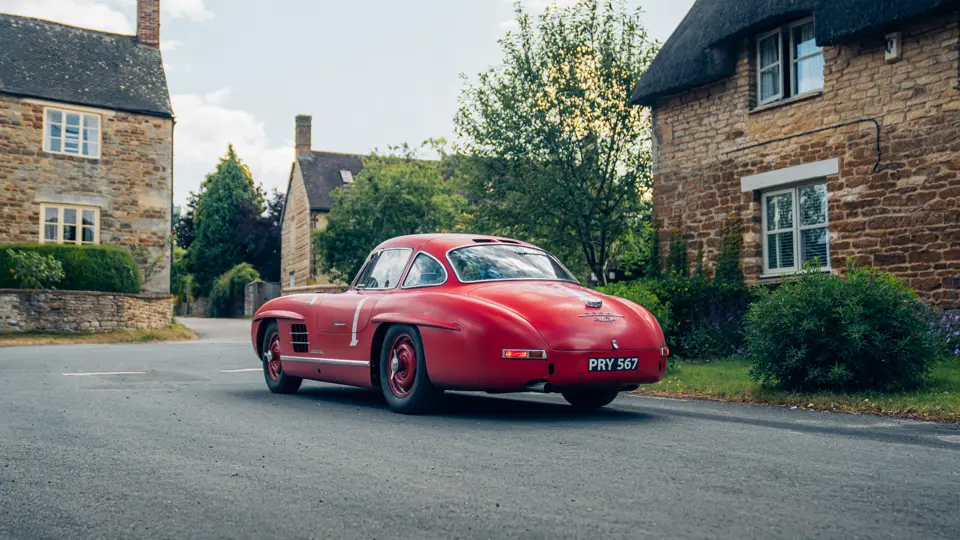
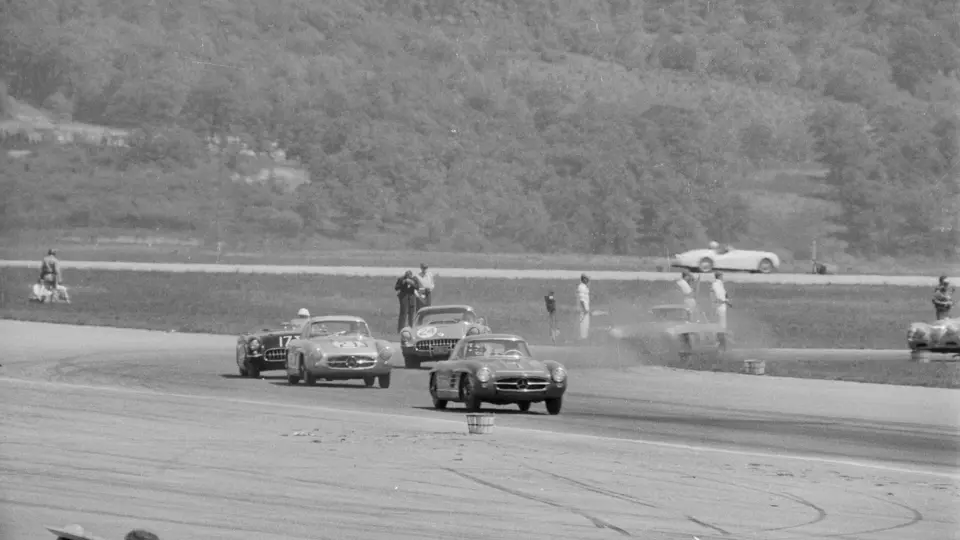


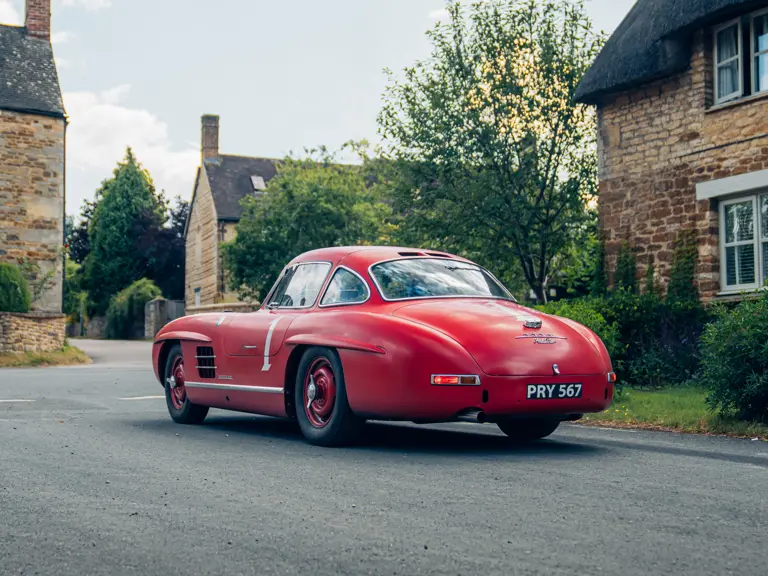

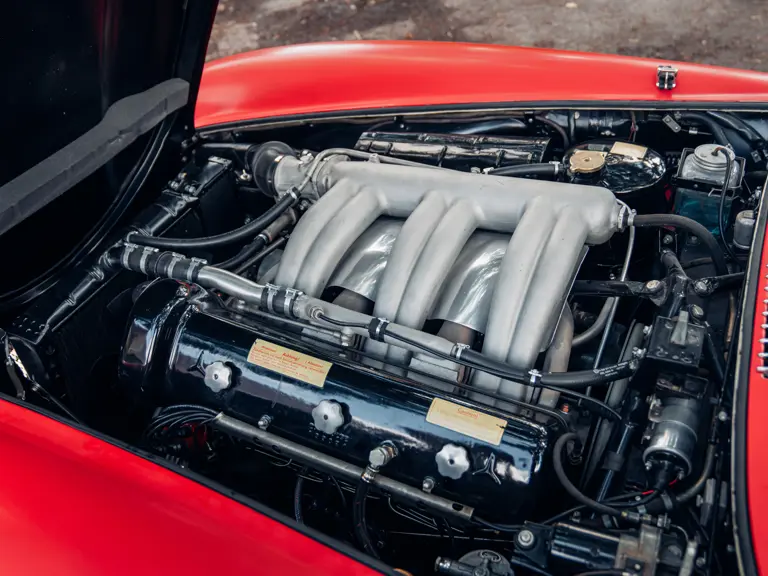
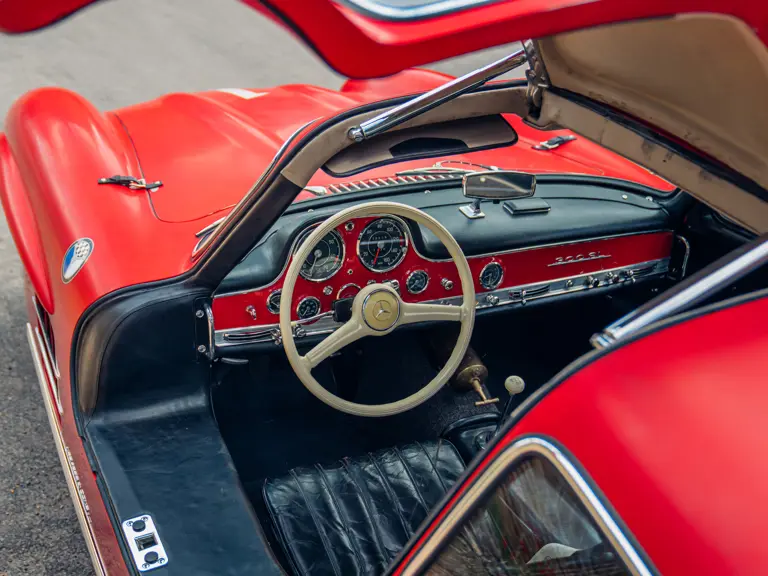
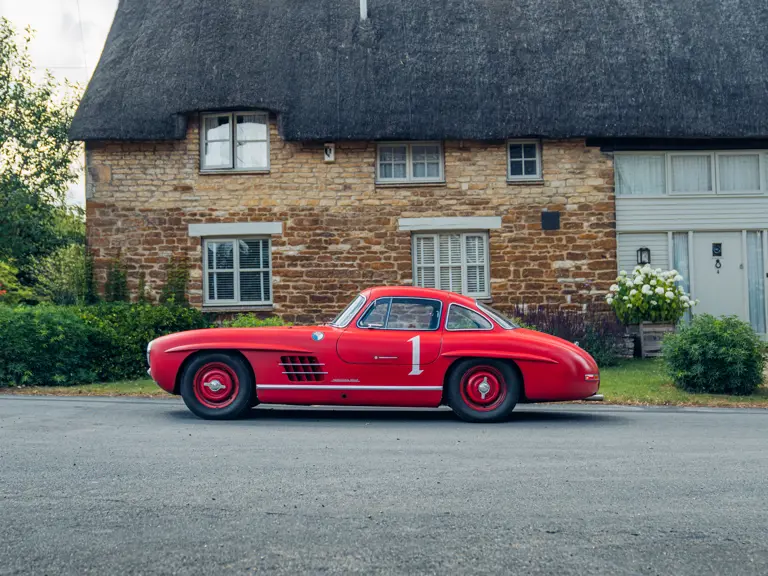
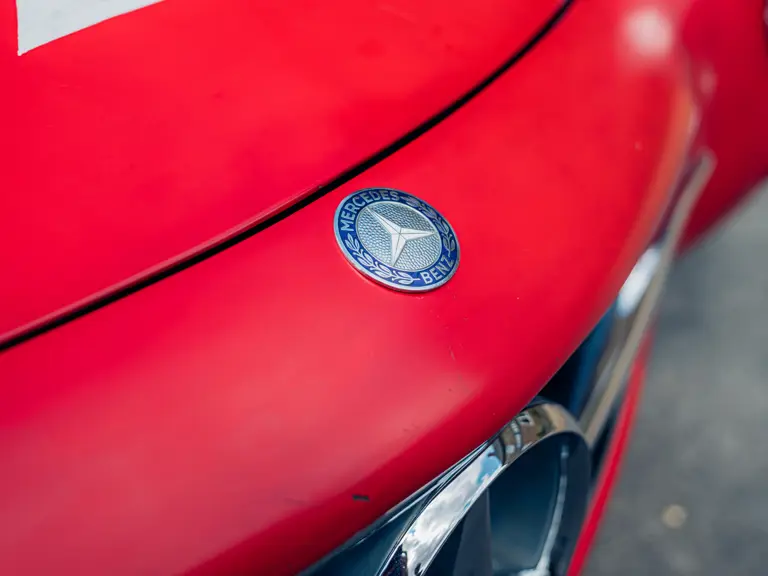
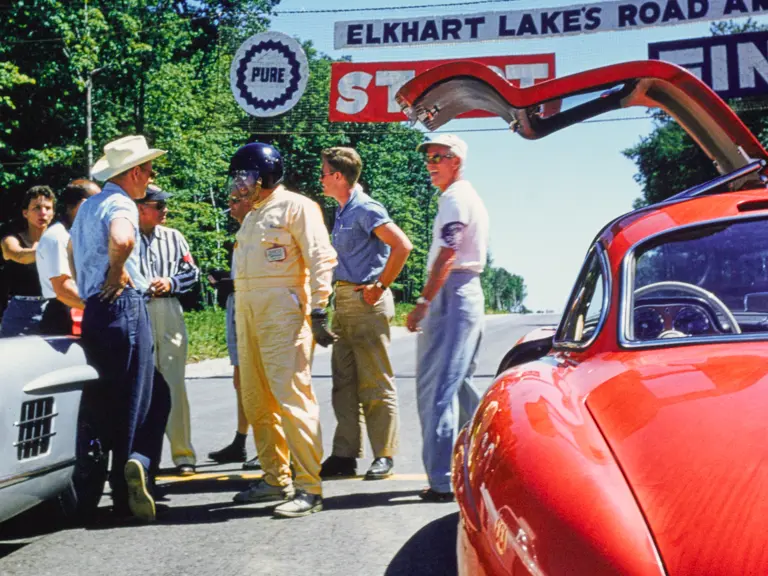
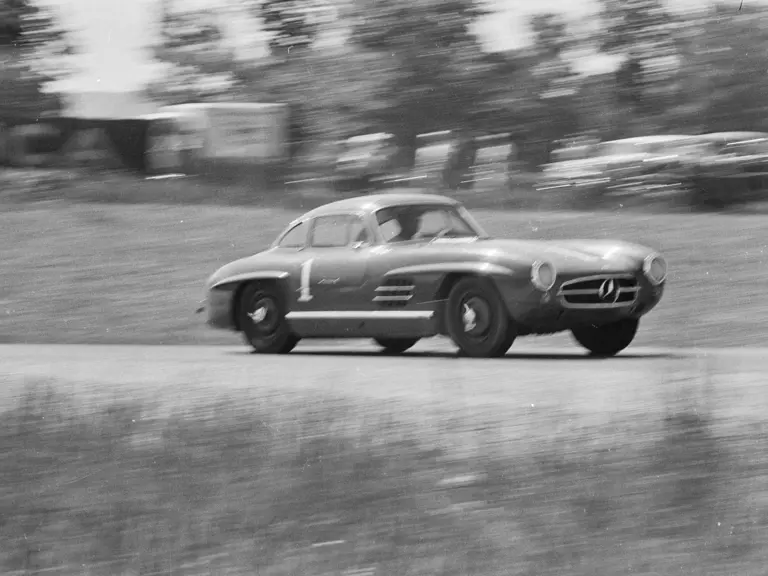
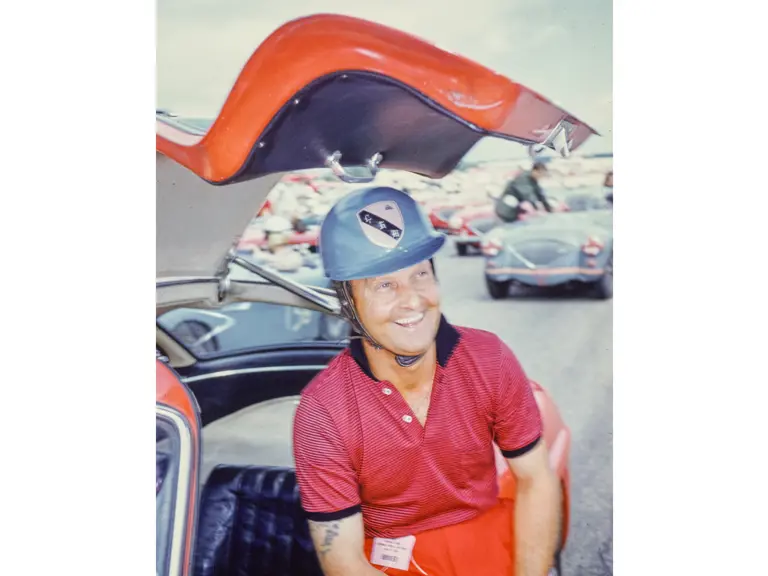
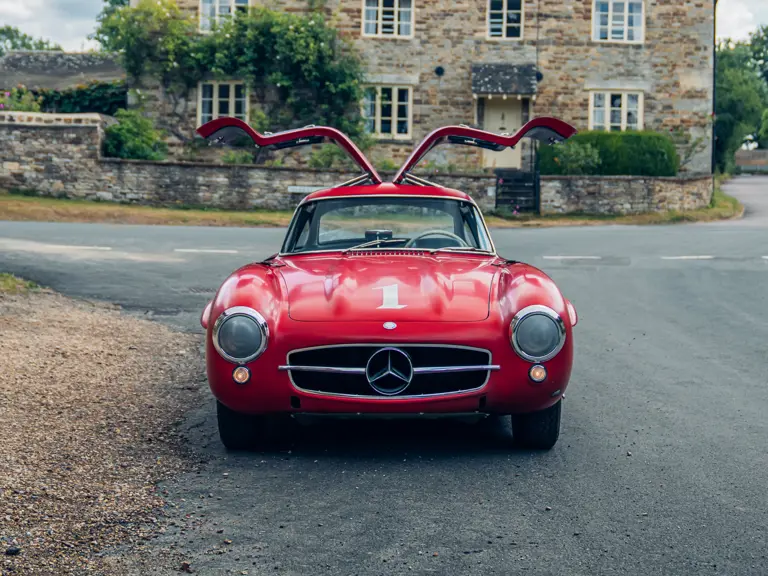
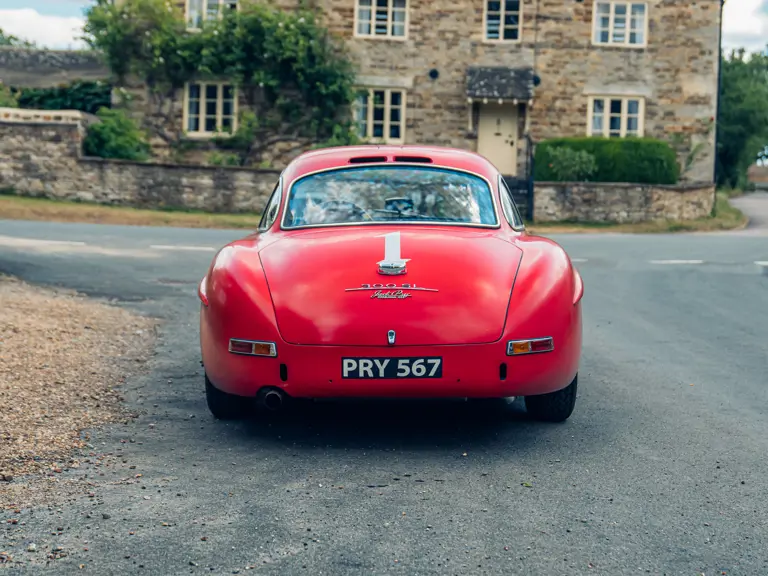
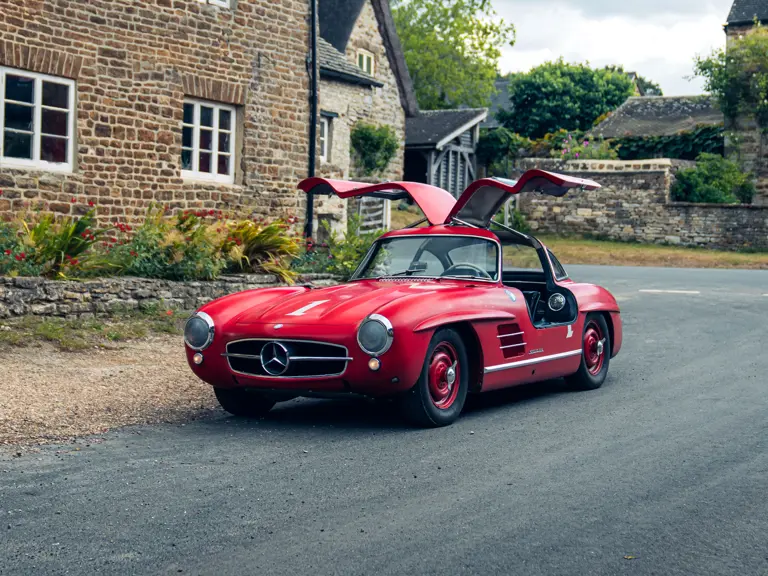
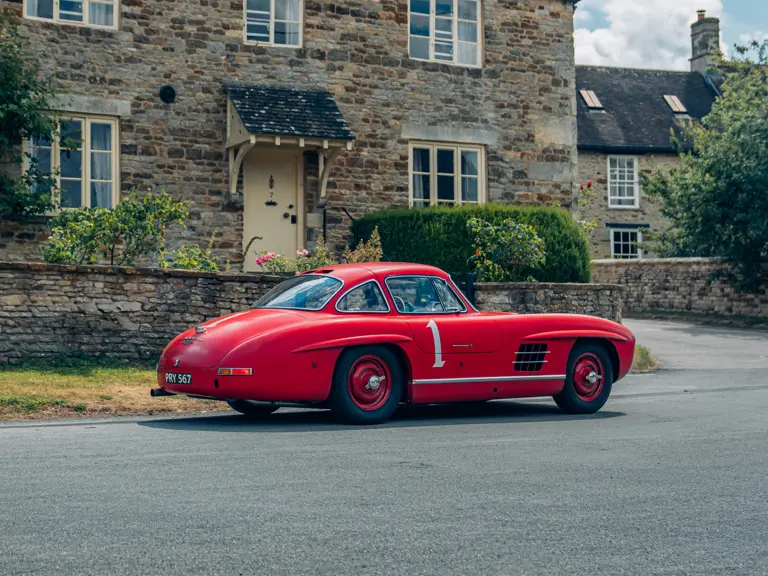
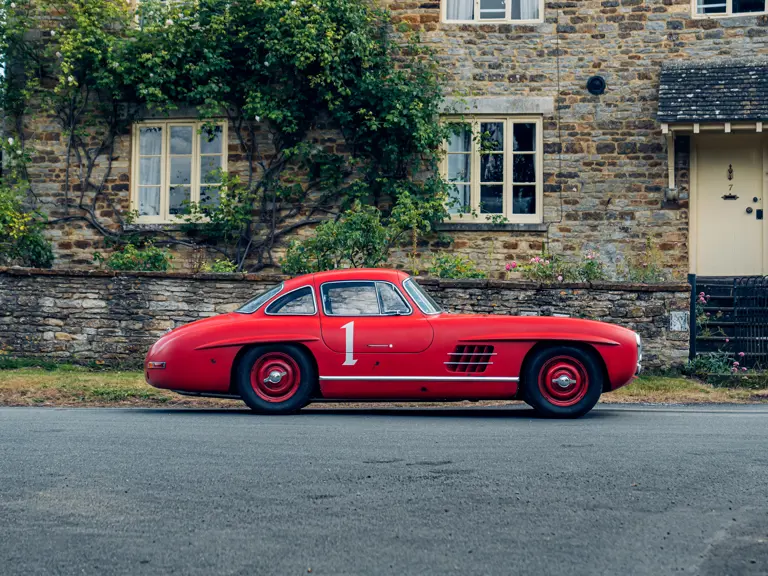
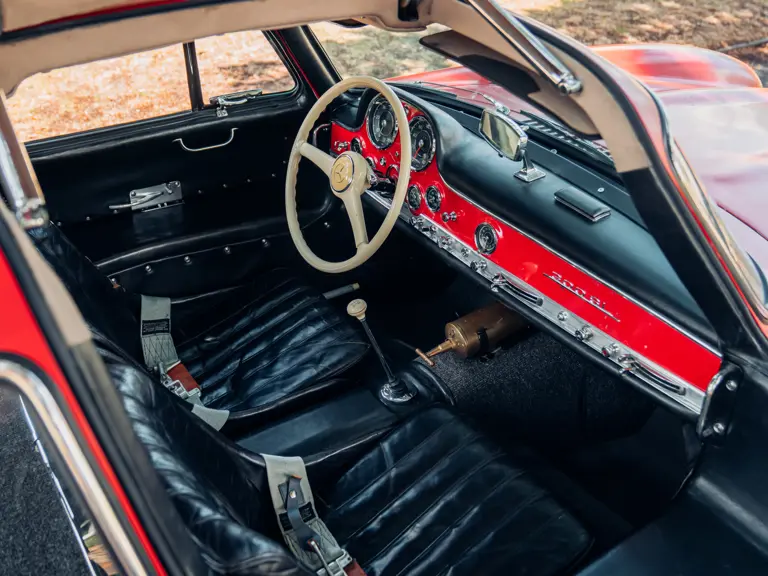

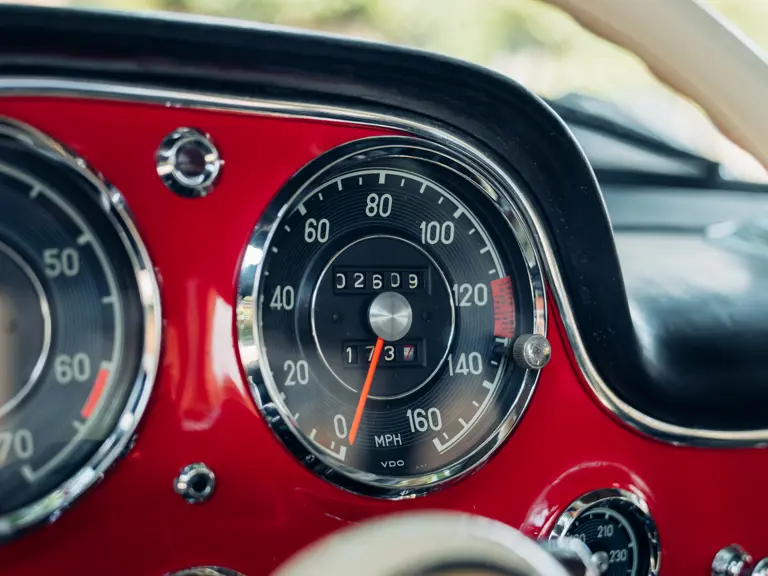
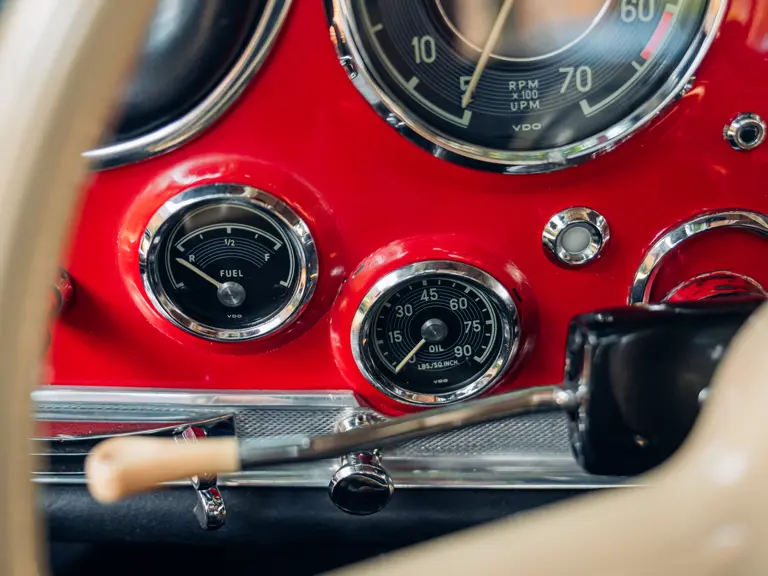
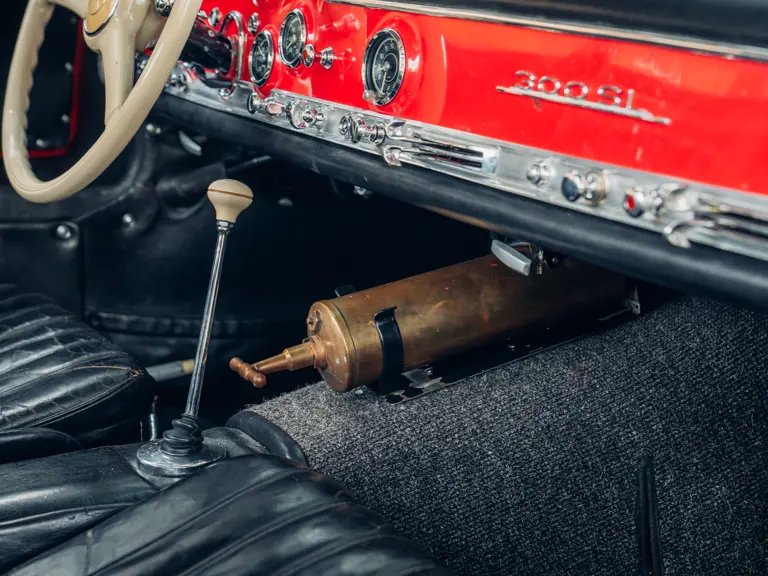

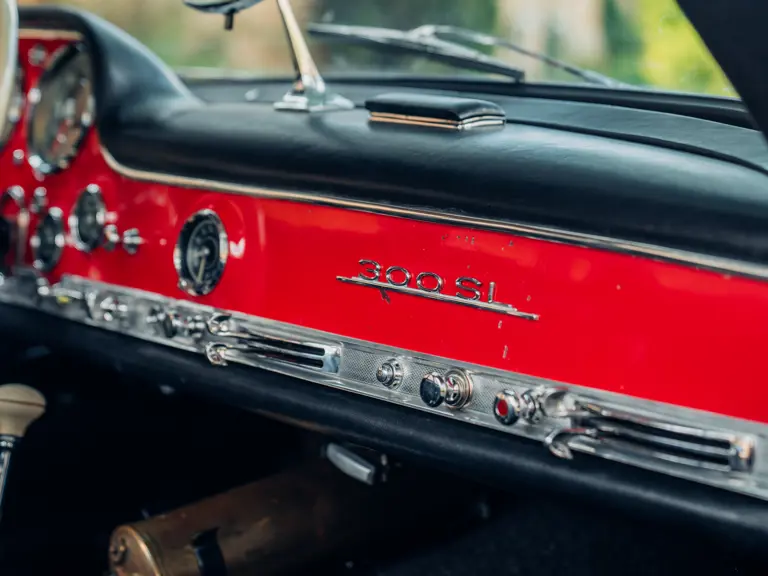
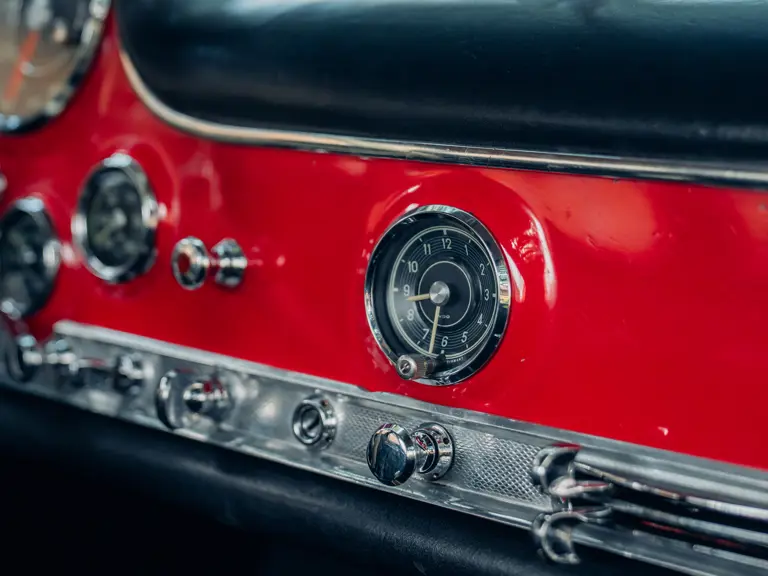
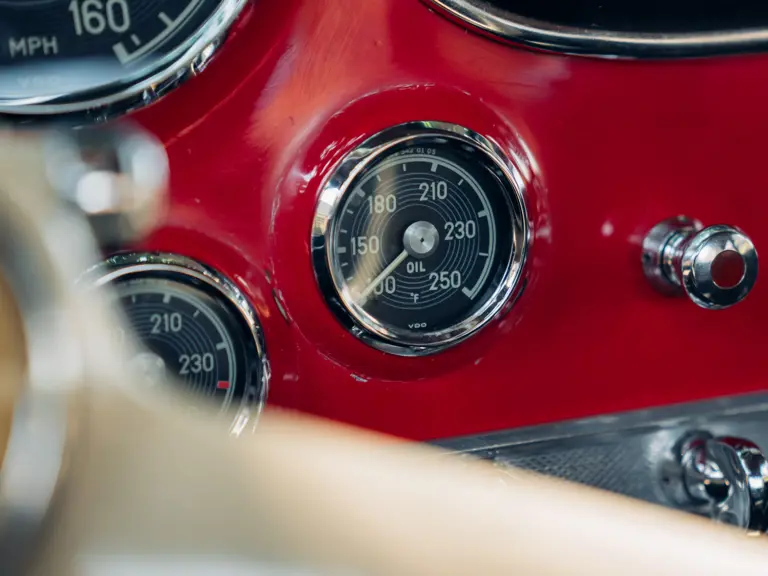
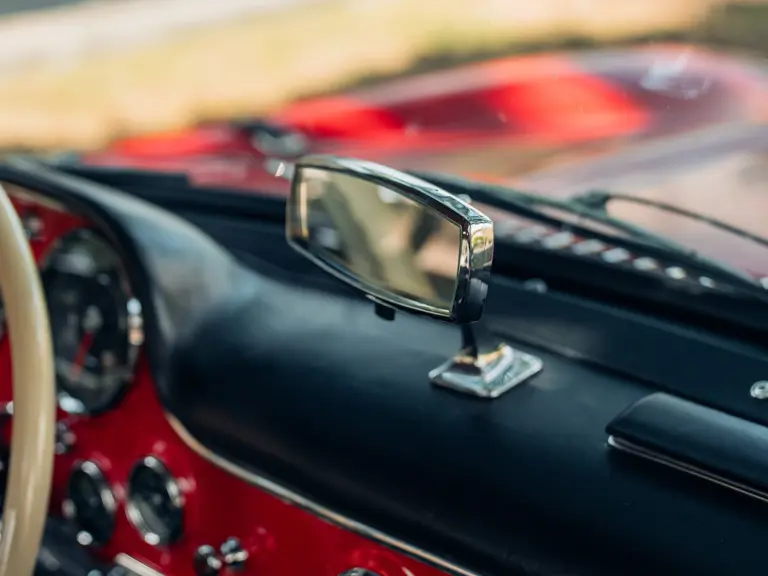
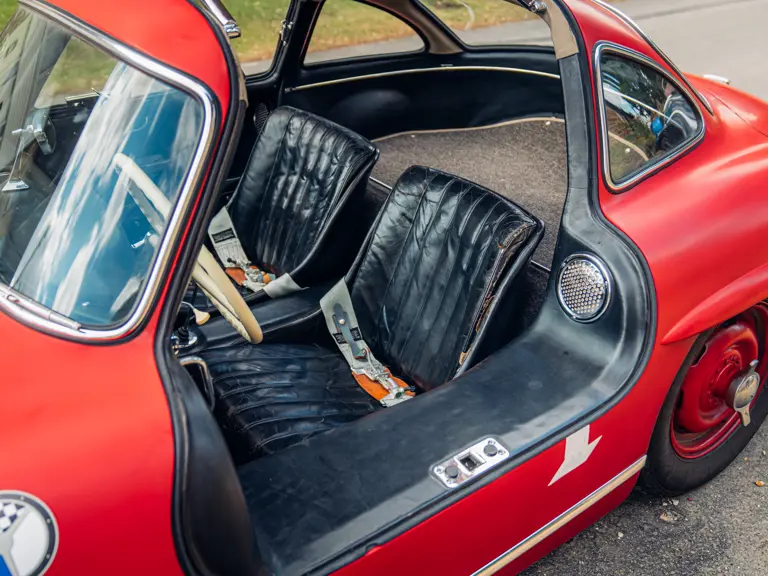

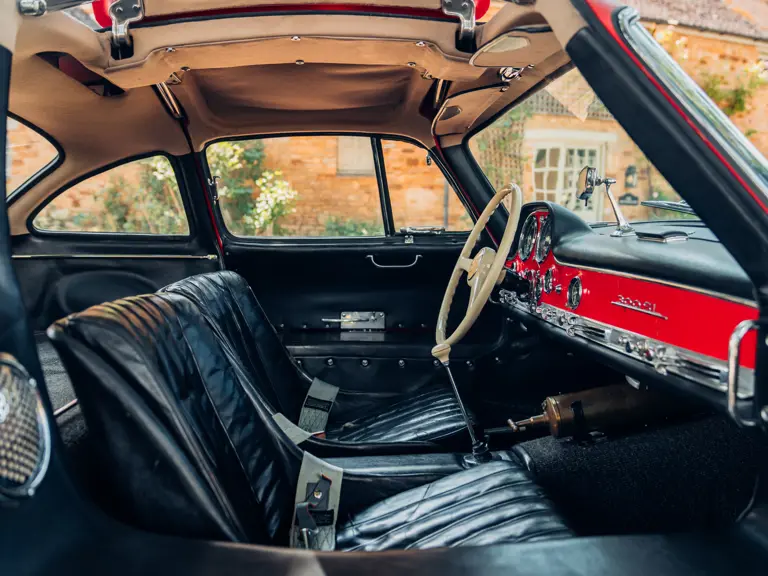
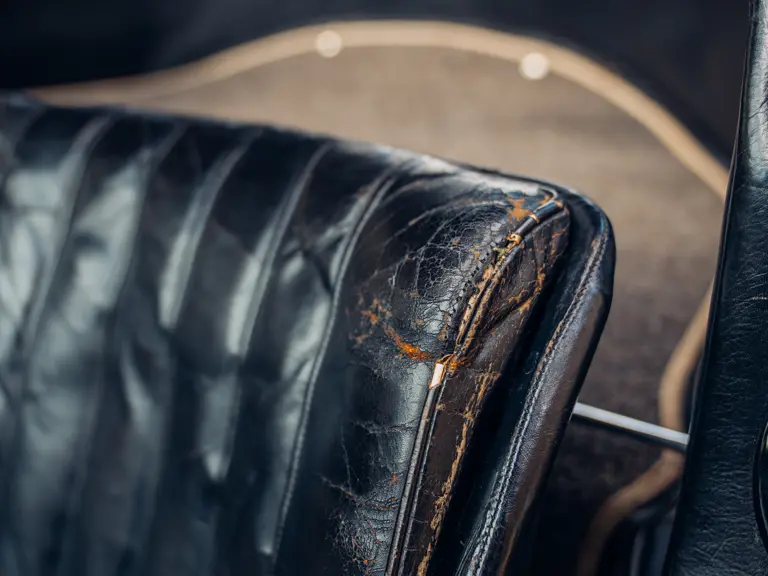
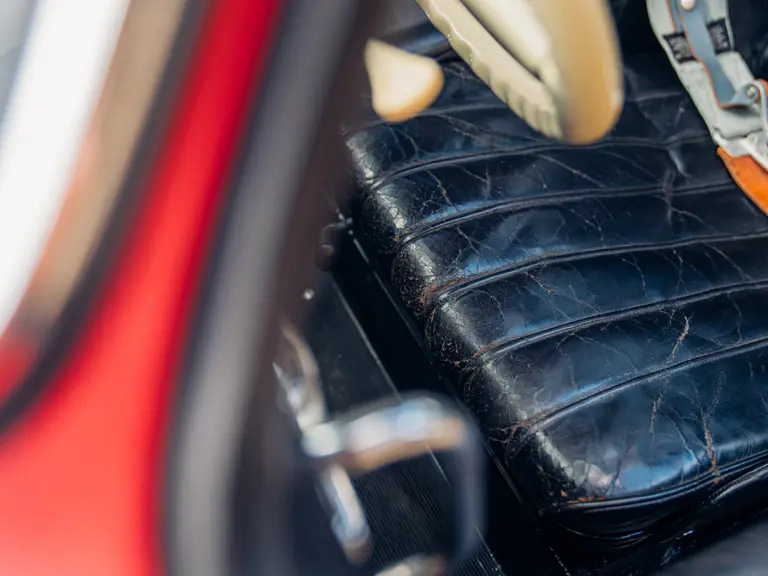

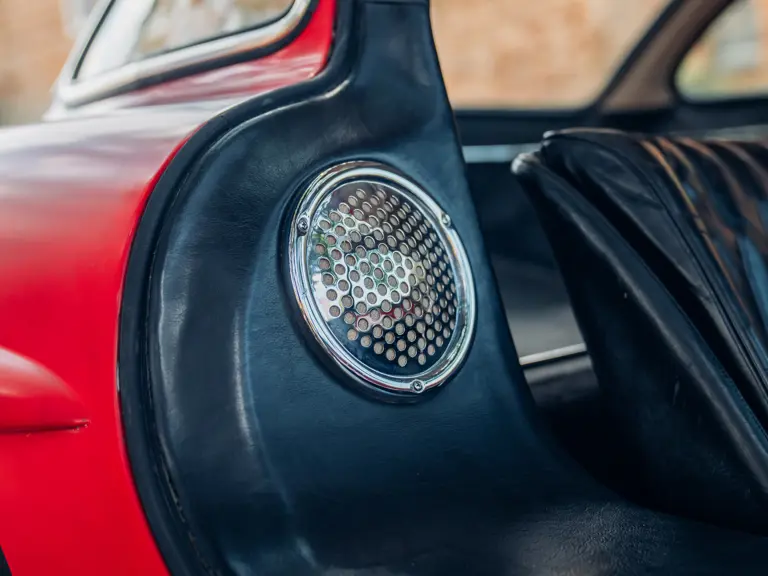
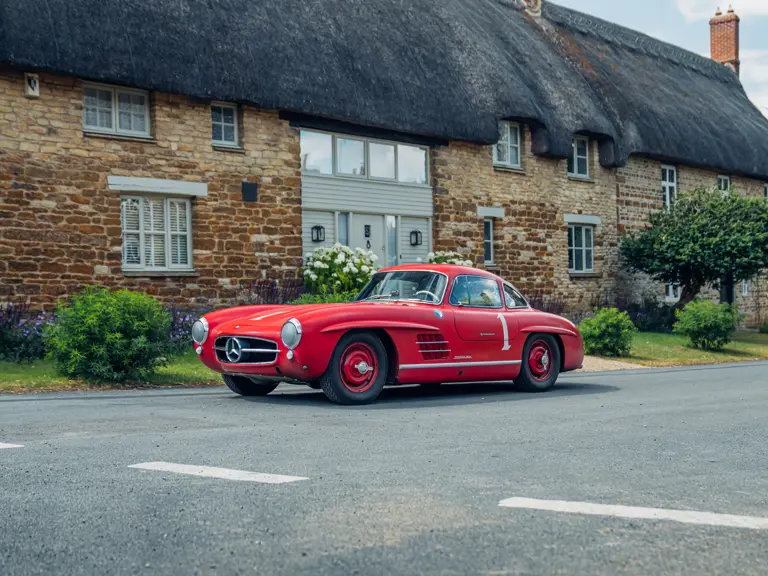
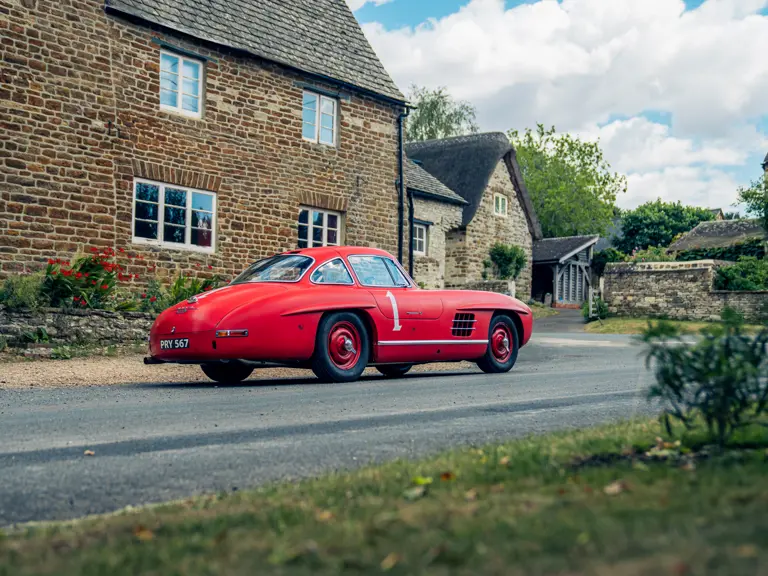
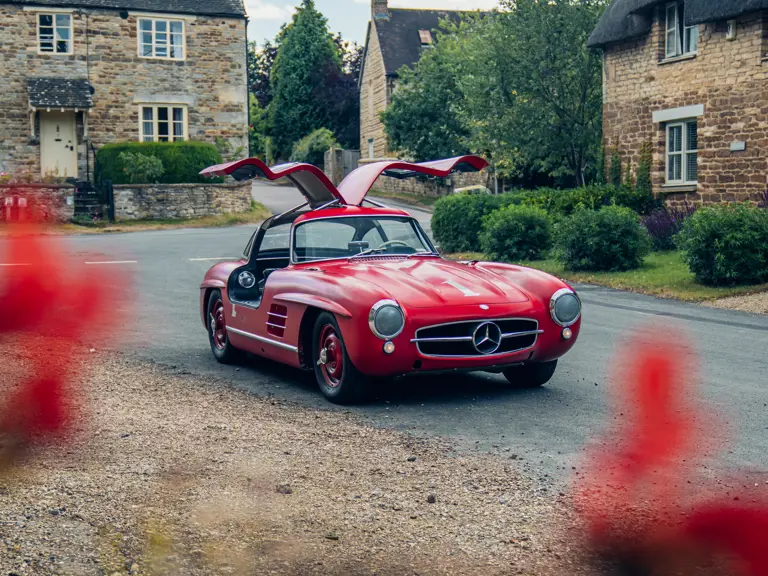
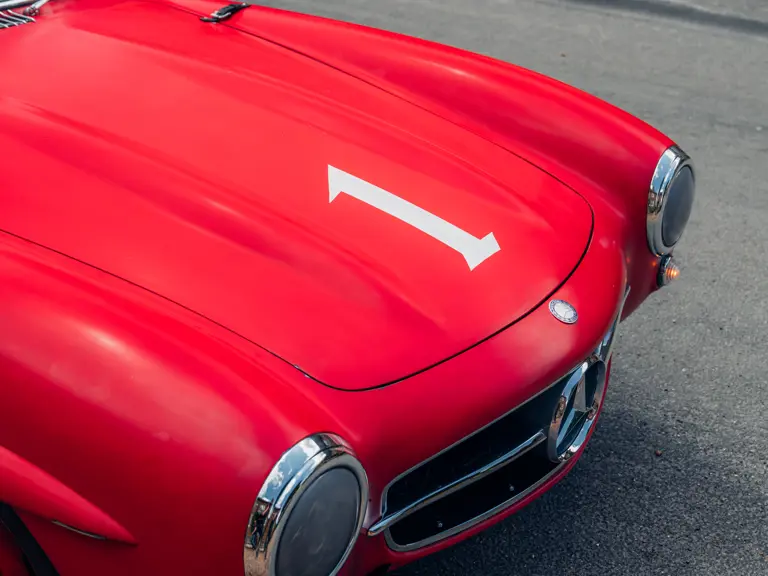
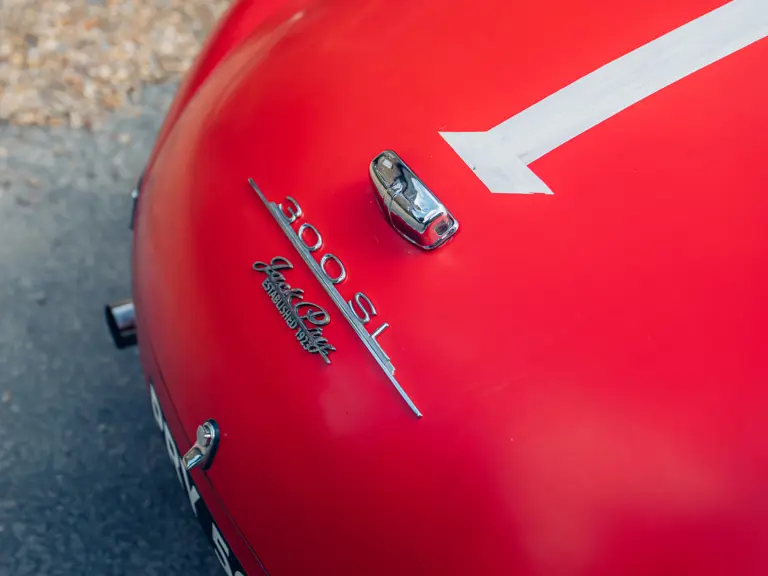
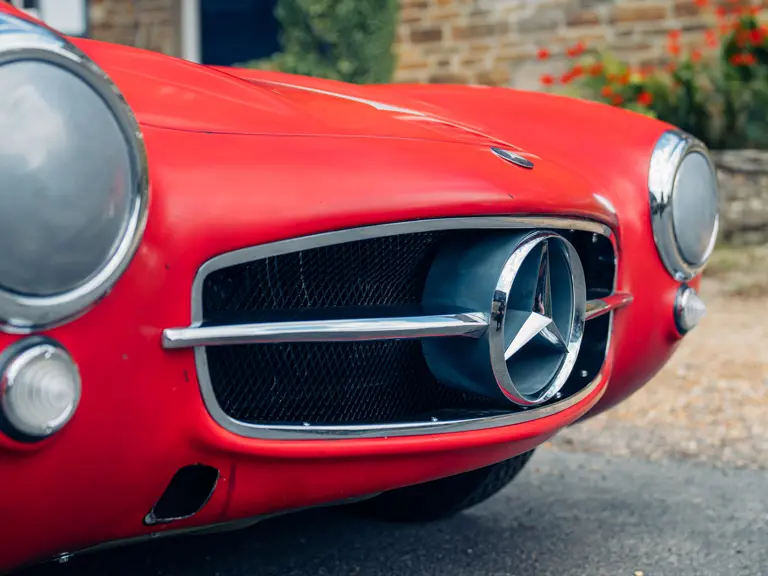
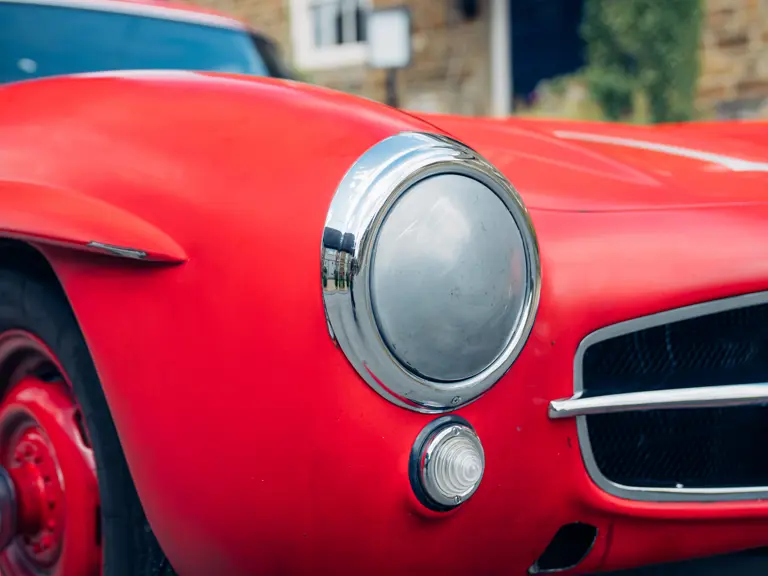
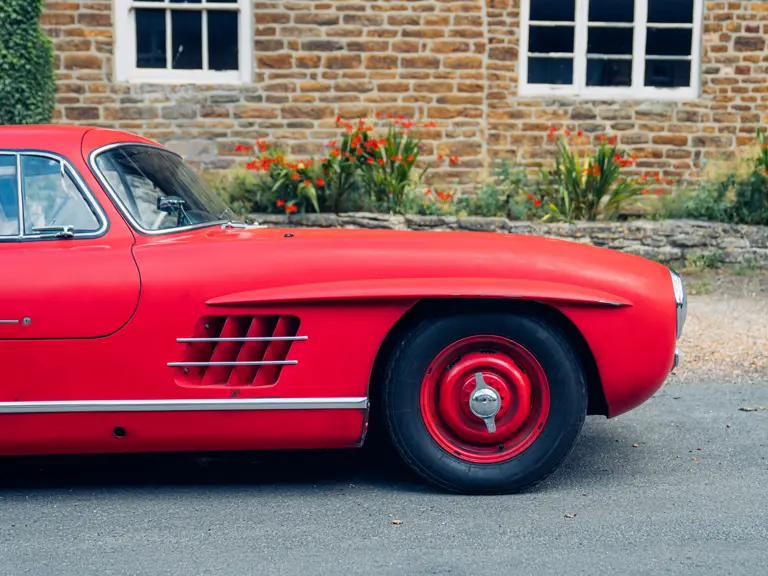
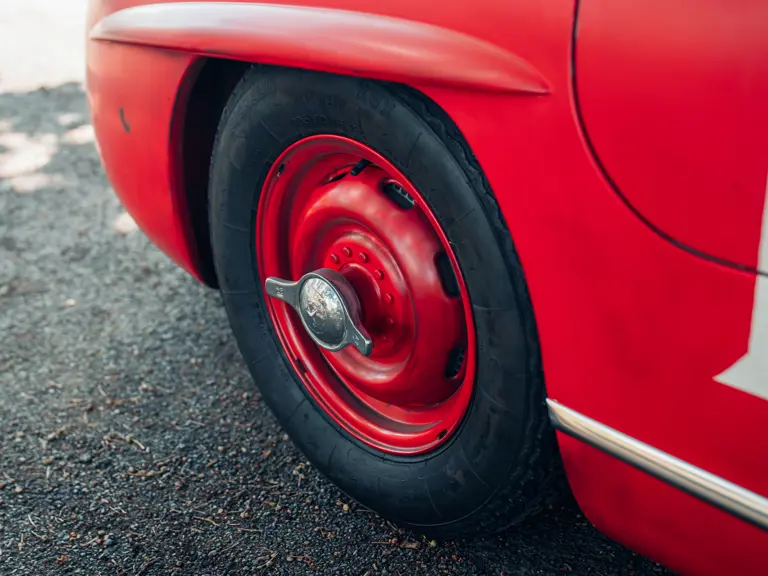
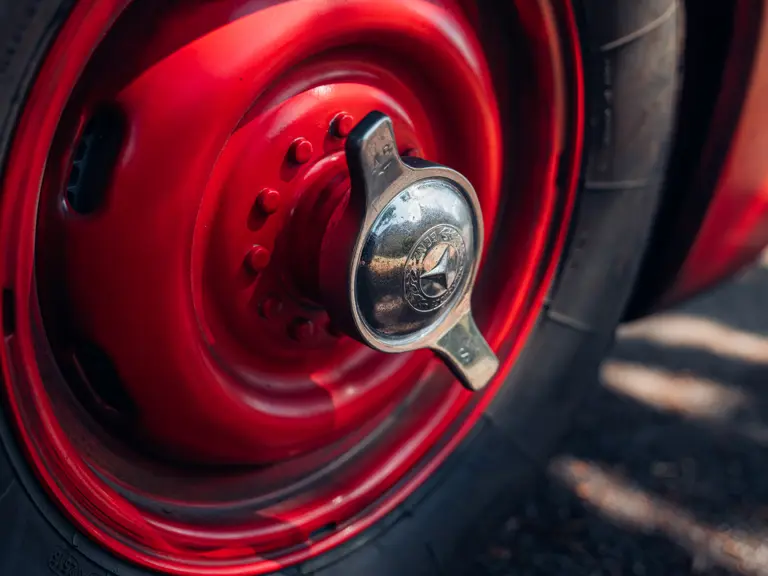
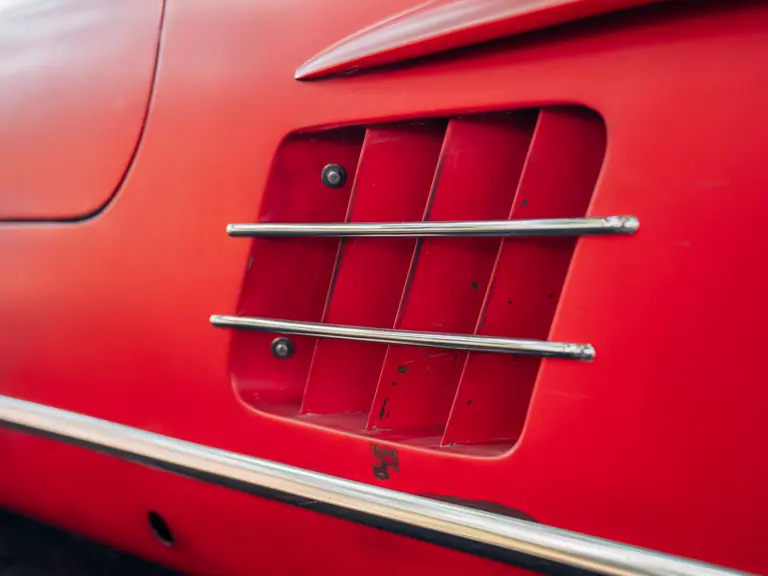

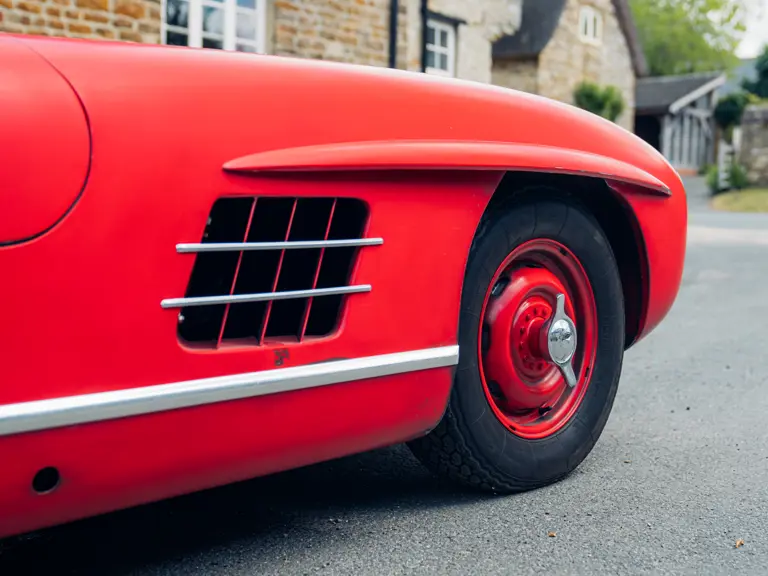
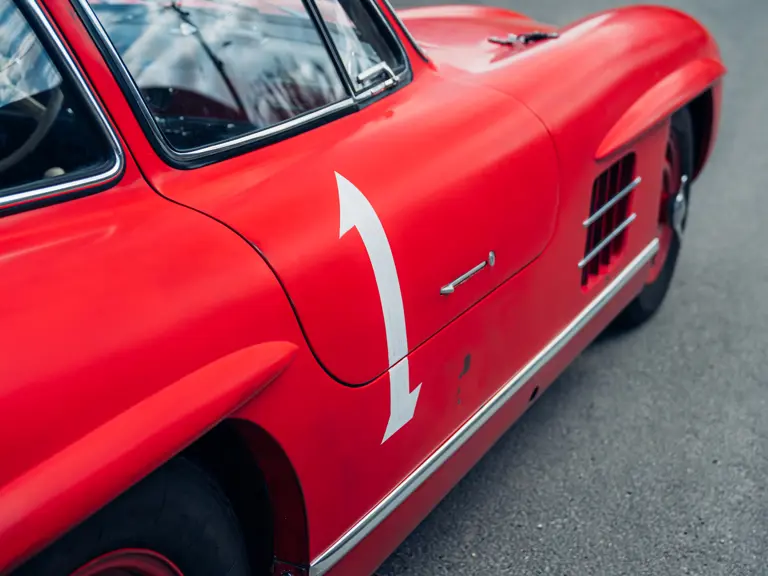
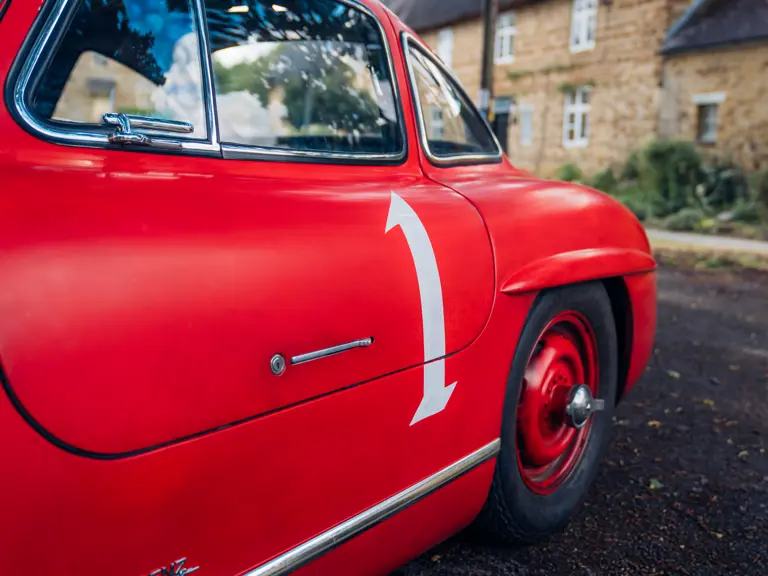
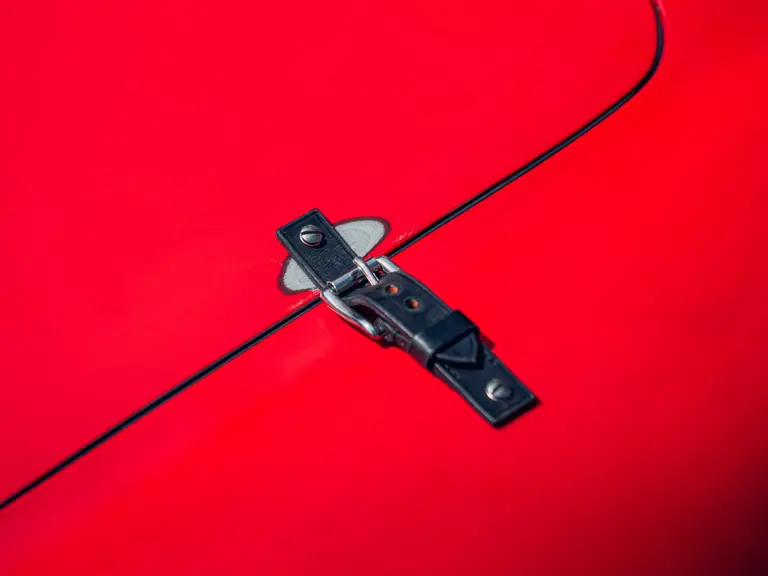
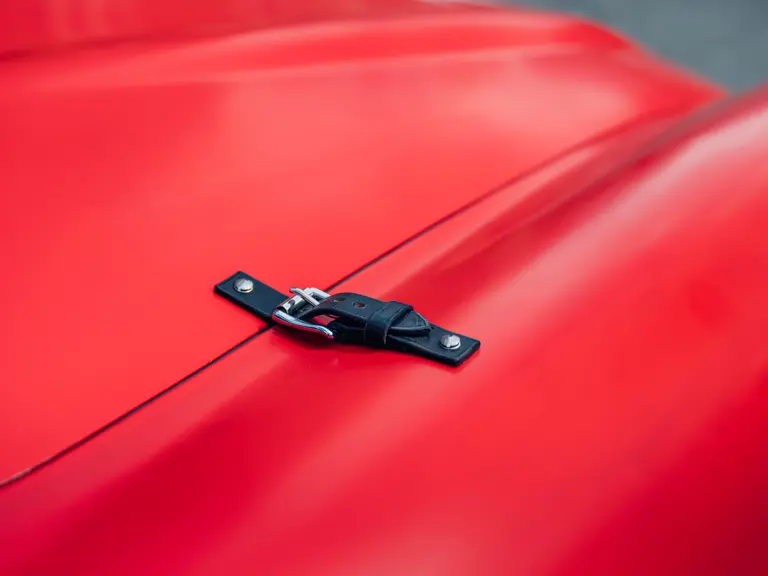
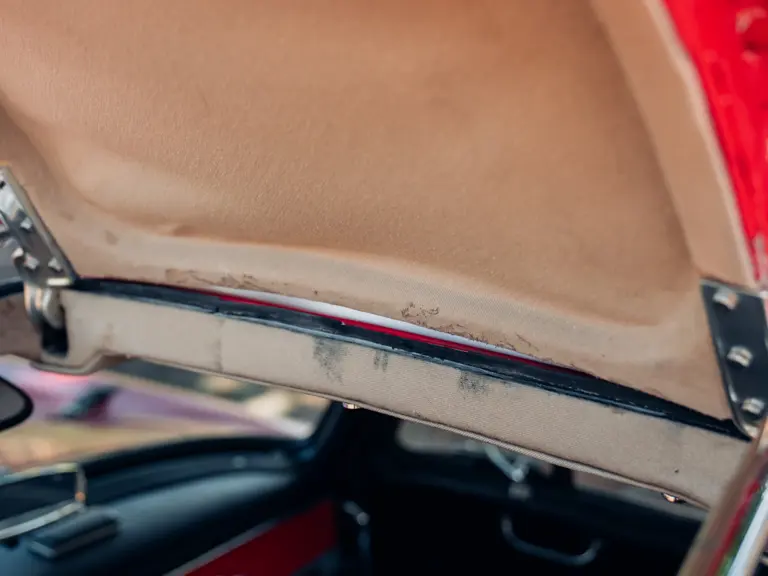
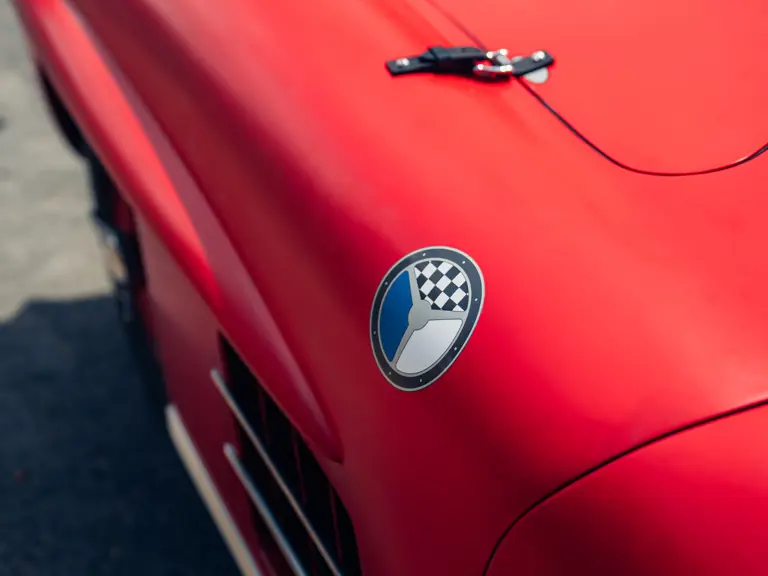
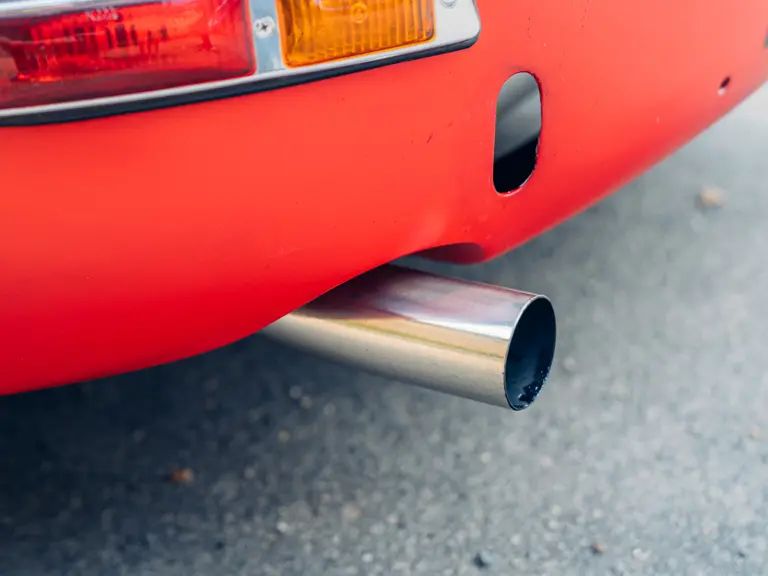
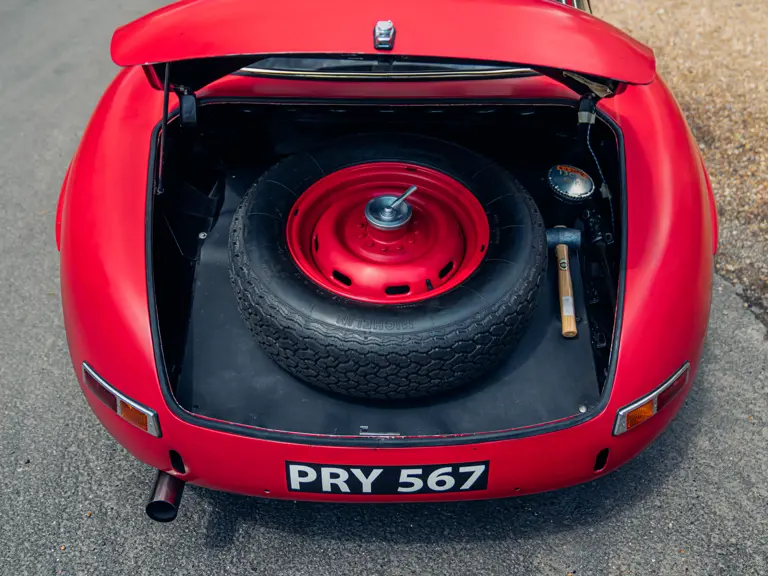
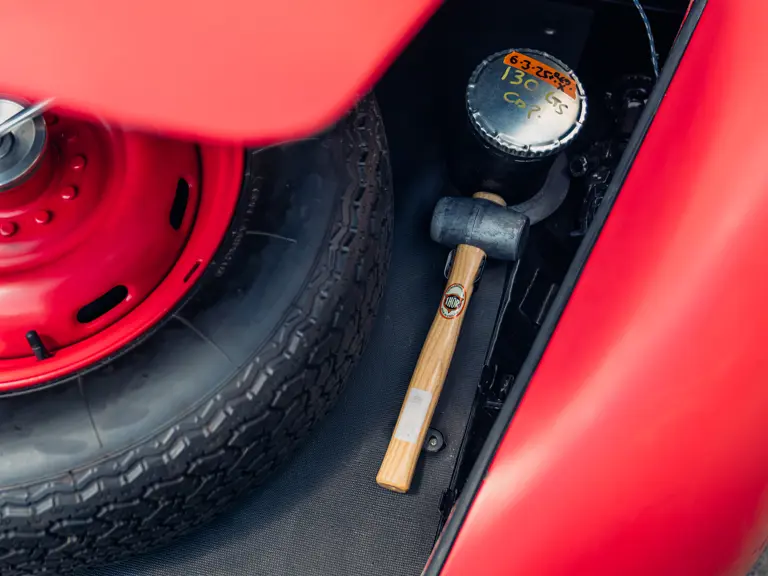
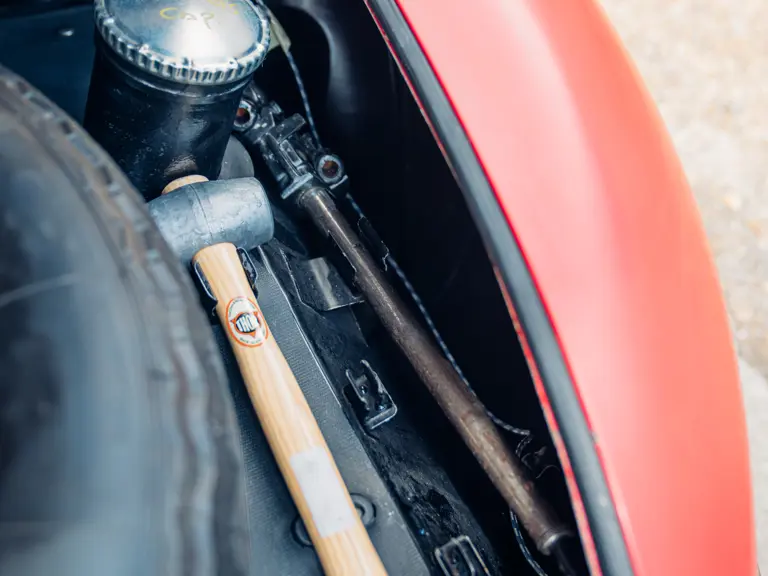
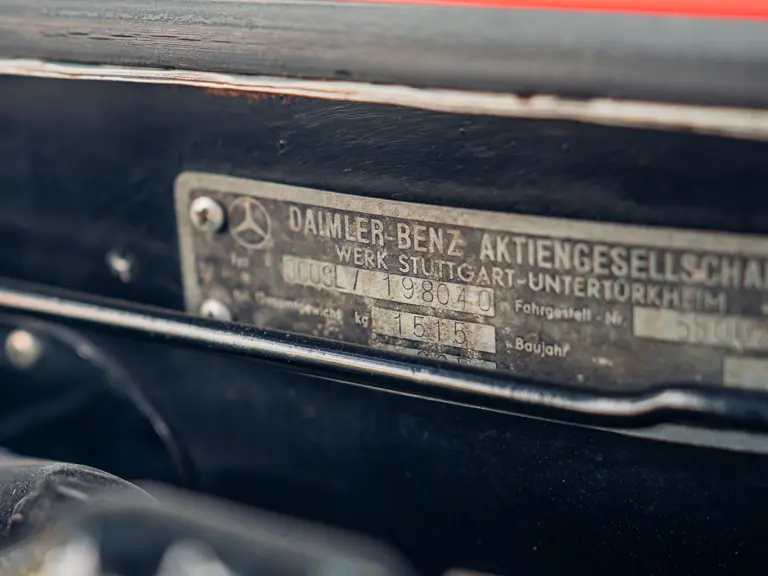
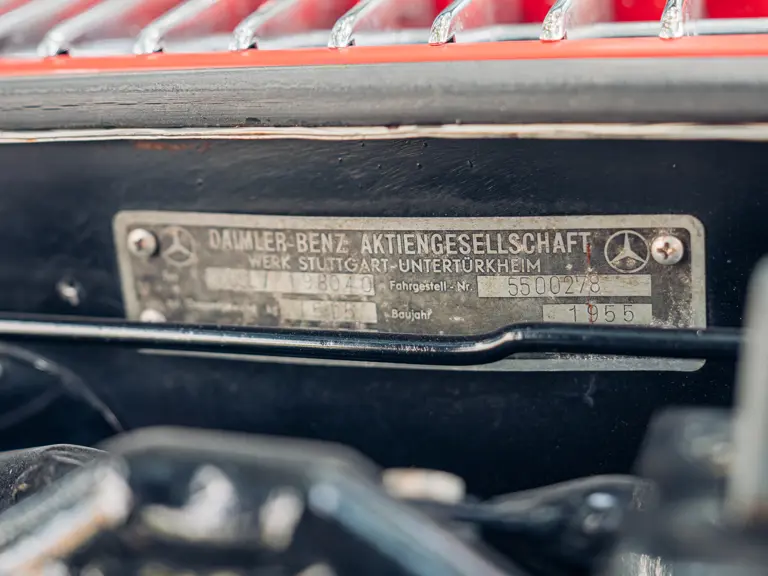
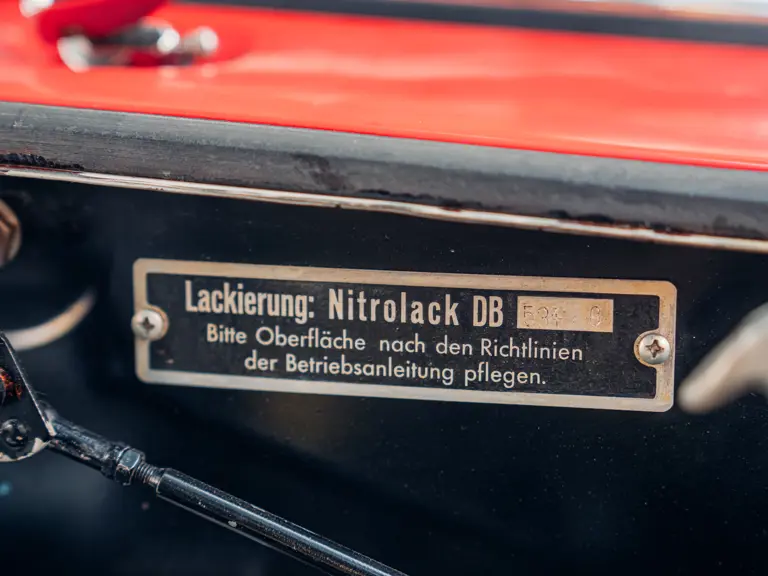
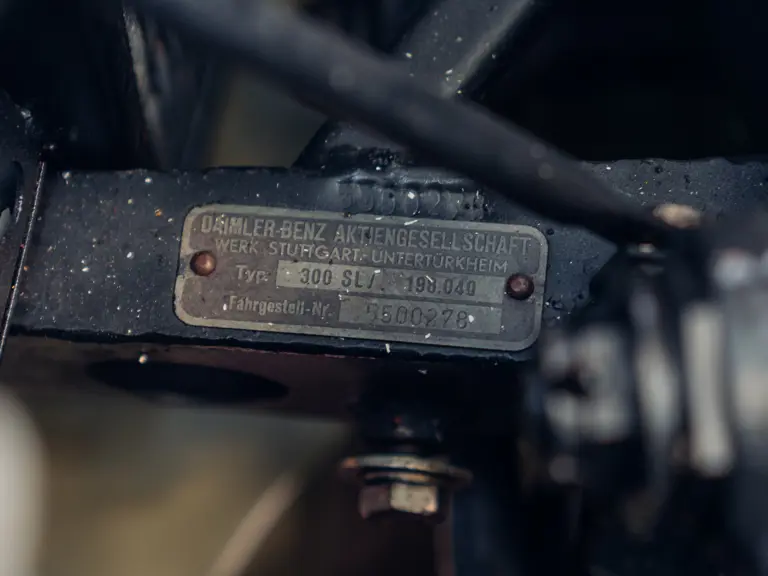
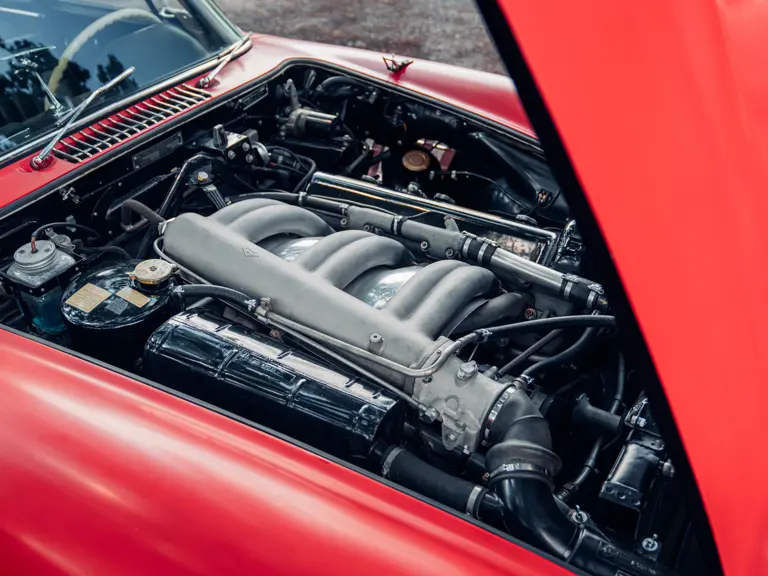
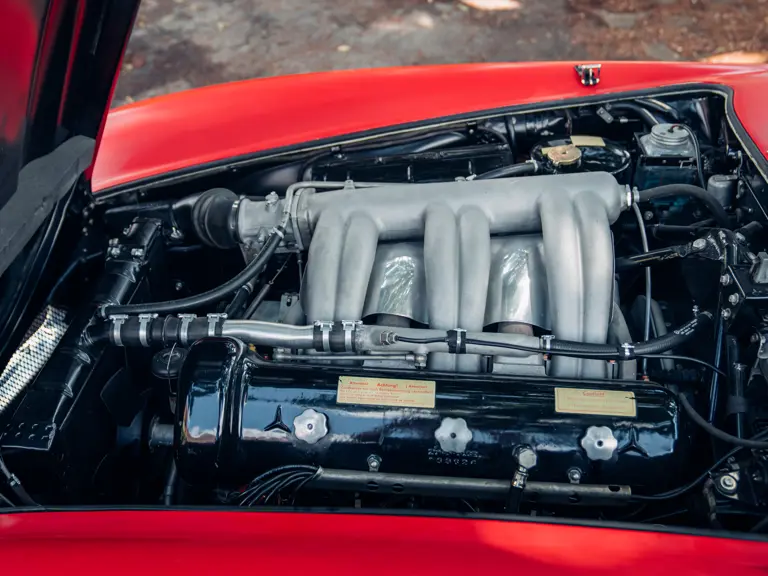
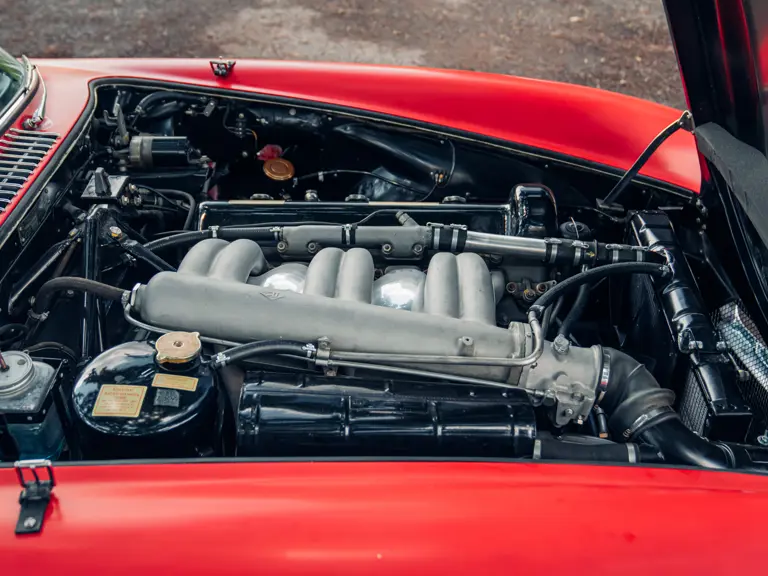
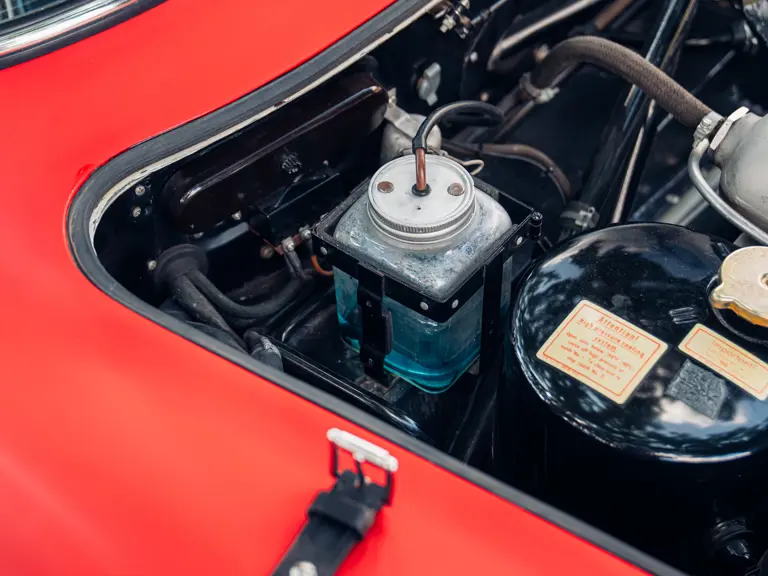
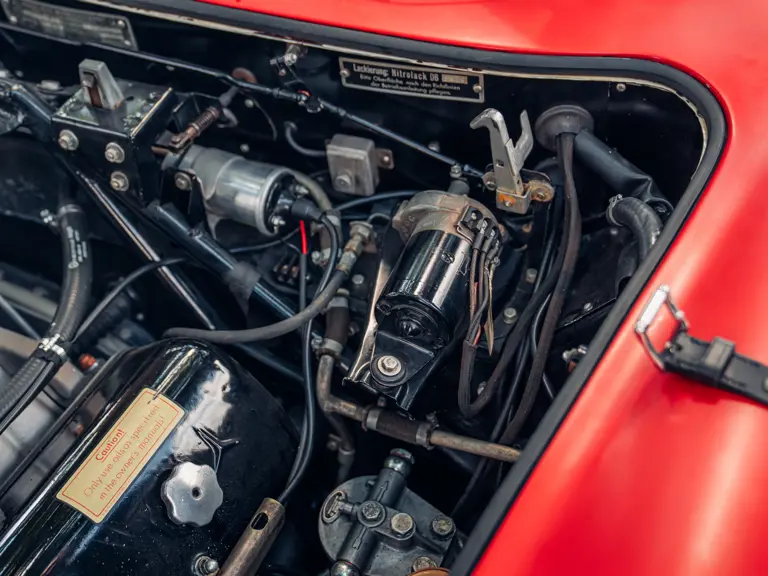
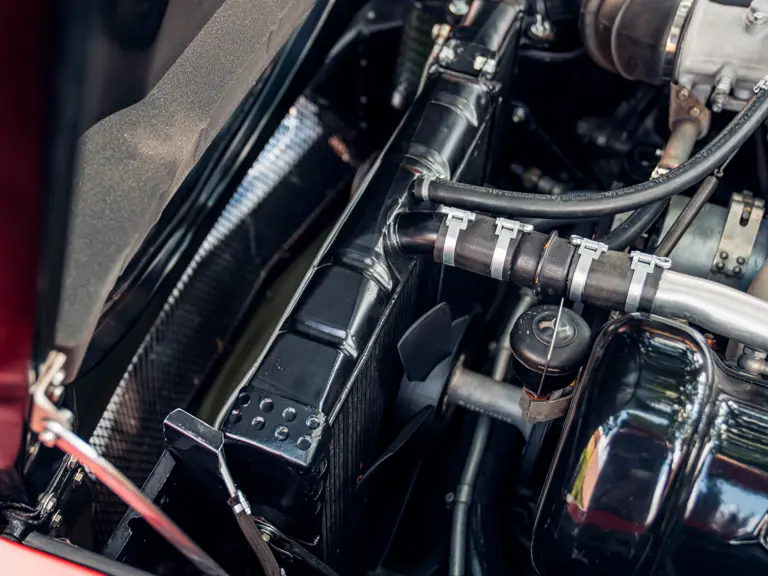
 | Troy, Michigan
| Troy, Michigan
